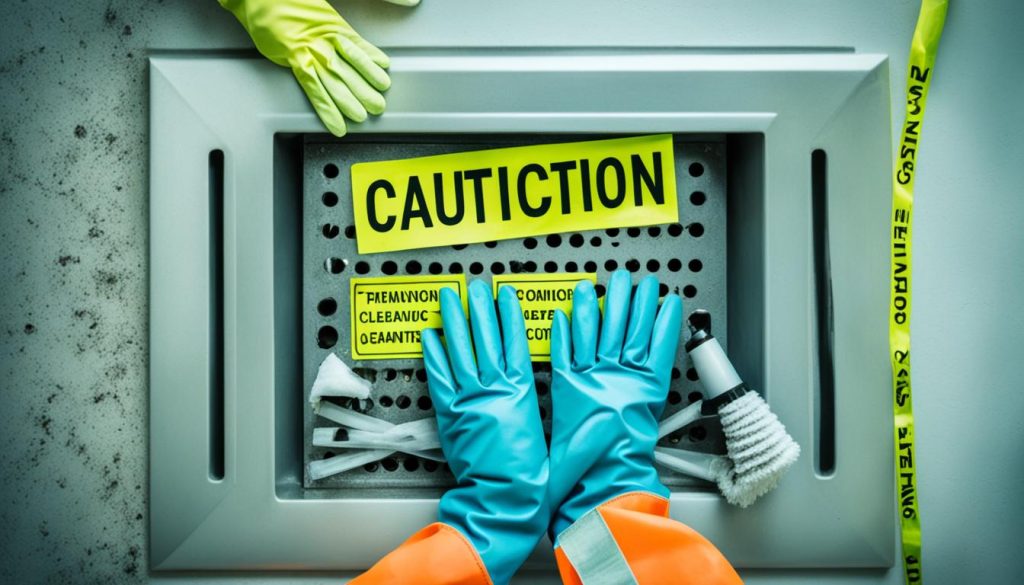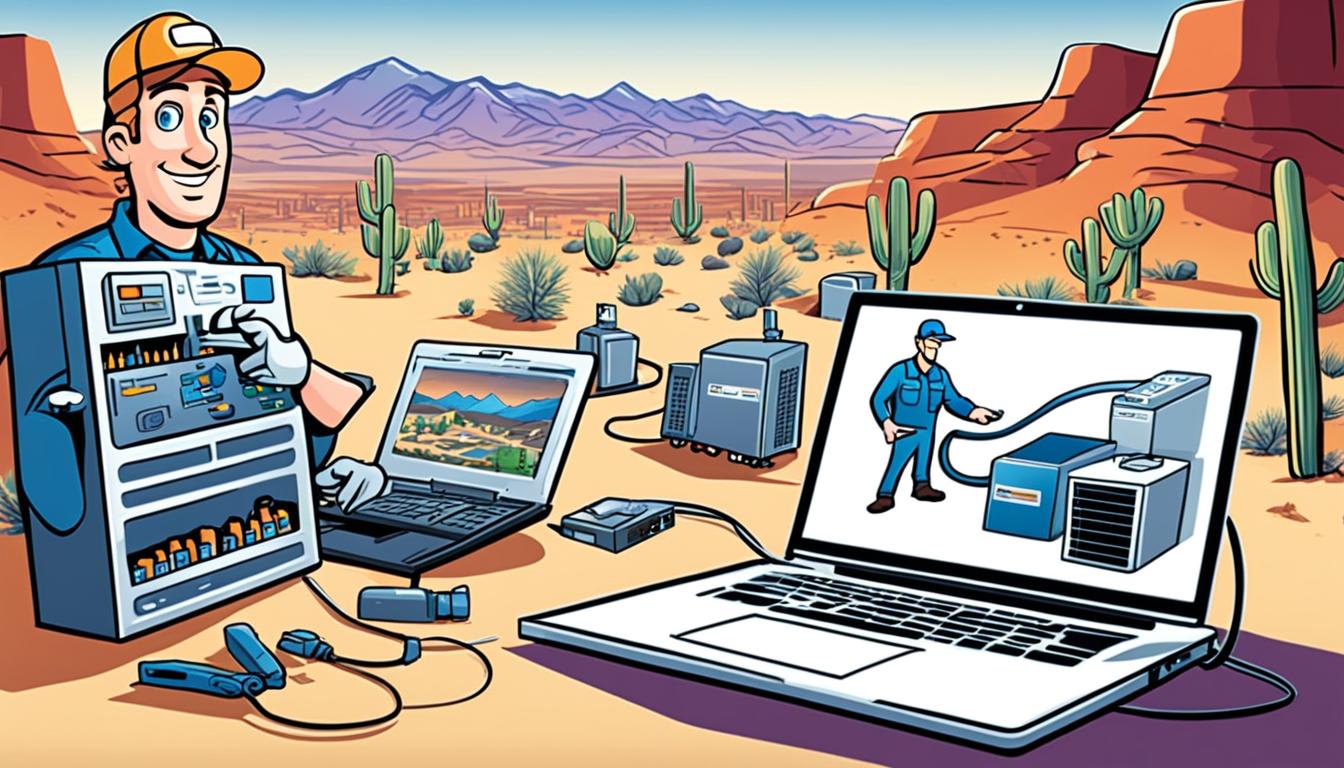When it comes to vent cleaning, safety should always be a top priority. Ventilation systems play a crucial role in maintaining indoor air quality and occupant health. However, ensuring that the cleaning process is carried out safely and effectively requires adherence to specific safety standards and regulations.
First and foremost, it’s important to note that the benefits of routine duct cleaning on indoor air quality and HVAC system performance are still being researched. While there isn’t enough evidence to draw definitive conclusions, it’s clear that dust and microbial growth can contaminate ductwork, potentially leading to poor air quality and health issues. Prevention is key, and various practices can help prevent duct contamination, such as routine preventive maintenance and sealing ductwork during renovation.
When duct cleaning is deemed necessary, it’s essential to follow best practices for vent cleaning safety. The National Air Duct Cleaning Association (NADCA) provides guidelines for the assessment, cleaning, and restoration of HVAC systems. They recommend visually inspecting HVAC systems for cleanliness at regular intervals and conducting annual inspections for healthcare facilities. It is also crucial to hire a NADCA member with certified Air System Cleaning Specialists (ASCS) to ensure the expertise and professionalism of the technicians.
To further ensure safety during vent cleaning procedures, implementing safety protocols is crucial. This includes proper personal protective equipment (PPE) for technicians, protecting the property of clients, and being prepared for potential emergencies. Clear communication with clients about safety measures is also important to address any concerns they may have.
Compliance with regulations and industry standards is another essential aspect of vent cleaning safety. Staying informed about guidelines set forth by occupational health and safety authorities, such as the Occupational Safety and Health Administration (OSHA), and professional organizations like NADCA is crucial. Adhering to these standards not only promotes safety but also enhances the credibility and reputation of the vent cleaning service provider.
Key Takeaways:
- Prevention of duct contamination is key to maintaining good indoor air quality and occupant health.
- Hiring a NADCA member with certified ASCS technicians ensures professionalism and expertise in vent cleaning.
- Implementing safety protocols, such as using proper PPE, protecting client property, and being prepared for emergencies, is crucial during vent cleaning procedures.
- Compliance with regulations and industry standards, such as those set by OSHA and NADCA, is essential for vent cleaning safety.
- Regularly reviewing and updating procedures to align with the latest guidelines and regulations promotes safety and credibility in vent cleaning.
Best practices for vent cleaning safety
When it comes to vent cleaning, safety should always be a top priority. Following best practices not only protects the well-being of technicians but also ensures a thorough and effective cleaning process. The National Air Duct Cleaning Association (NADCA) provides valuable guidelines and protocols to promote safety in commercial vent cleaning.
NADCA recommends conducting regular visual inspections of HVAC systems to assess cleanliness. In healthcare facilities, annual inspections are particularly important to maintain indoor air quality. Additionally, it is crucial to inspect and clean new ductwork before connecting it to the air handling system, ensuring a clean and efficient operation from the start.
So, when is duct cleaning deemed necessary? It is generally recommended in cases of permanent water damage, slime or microbial growth, debris build-up restricting air flow, dust discharging from supply diffusers, or offensive odors originating from ductwork or HVAC components.
When hiring a vent cleaning service, it is essential to choose a NADCA member with certified Air System Cleaning Specialists (ASCS). This ensures that the technicians have undergone rigorous training and possess the necessary expertise to perform the job safely and effectively.
To protect occupants during the cleaning process, certain safety measures should be implemented. Here are some recommended commercial vent cleaning safety measures:
- Place filters over supply and return grills to capture any dislodged debris during the cleaning process.
- Schedule vent cleaning during unoccupied hours to minimize disruption and reduce exposure to contaminants.
- Use containment barriers to prevent the spread of dirt and debris to other areas of the building.
- Properly ventilate the work area to ensure the removal of airborne contaminants.
- Avoid the use of biocides and sealants, as they may introduce additional chemicals into the environment.
Implementing these safety measures not only protects the health and safety of building occupants but also contributes to a successful and reliable vent cleaning process.
In conclusion, adhering to the best practices for vent cleaning safety, as recommended by NADCA, is essential for achieving optimal results while maintaining a safe working environment. By following these guidelines, vent cleaning professionals can ensure the highest level of quality, efficiency, and safety in their services.
Implementing safety protocols in vent cleaning procedures

When it comes to vent cleaning procedures, the safety of both technicians and clients is of utmost importance. By implementing comprehensive safety protocols, you can ensure a secure environment throughout the cleaning process. These protocols encompass various aspects, including personal protective equipment (PPE), property protection, and emergency preparedness.
Personal Protective Equipment (PPE)
In any vent cleaning procedure, technicians should always wear the necessary PPE to safeguard against potential risks. This includes:
- Gloves: Protect hands from contaminants and sharp objects.
- Masks: Filter out particles and prevent inhalation.
- Goggles: Shield eyes from dust and debris.
- Coveralls: Shield the body from dirt, allergens, and other hazards.
By equipping technicians with the appropriate PPE, you can significantly reduce the chances of occupational hazards and ensure their well-being during the cleaning process.
Property Protection
While performing vent cleaning, it’s essential to take precautions to protect the property of your clients. This includes:
- Using Protective Materials: Lay down protective materials like drop cloths or plastic sheets to prevent any damage to floors, furniture, or other surfaces.
- Ensuring Proper Ventilation: Properly ventilate the area during the cleaning process to minimize the spread of dust and contaminants.
- Using Containment Barriers: Use containment barriers to isolate the cleaning area, preventing cross-contamination and restricting access to unauthorized individuals.
By taking these measures, you not only safeguard your clients’ property, but you also demonstrate professionalism and respect for their premises.
Emergency Preparedness
Preparing for potential emergencies is crucial during vent cleaning procedures. Here are some steps you can take to ensure adequate emergency preparedness:
- Familiarize Yourself with Emergency Shutdown Procedures: Understand the emergency shutdown procedures for HVAC systems and ensure all technicians are familiar with them.
- Access to Relevant Contact Information: Keep a list of important contacts readily available, such as local emergency services and maintenance personnel, in case of any unforeseen events.
By being well-prepared for emergencies, you can effectively handle any unexpected situations and minimize potential risks.
Implementing safety protocols for vent cleaning procedures not only protects your technicians but also enhances client satisfaction and trust. By prioritizing safety, you demonstrate professionalism and a commitment to providing quality service.
| Safety Protocol | Description |
|---|---|
| Personal Protective Equipment (PPE) | Technicians should wear gloves, masks, goggles, and coveralls to protect against potential risks during vent cleaning procedures. |
| Property Protection | Using protective materials, ensuring proper ventilation, and using containment barriers help safeguard clients’ property during cleaning. |
| Emergency Preparedness | Being familiar with emergency shutdown procedures and having access to relevant contact information prepares technicians for potential emergencies. |
Compliance with regulations and industry standards for vent cleaning
When it comes to HVAC duct cleaning, compliance with regulations and industry standards is essential to ensure the safety and quality of the service provided. Staying informed about guidelines set forth by occupational health and safety authorities and professional organizations is crucial. This includes following the recommendations of the U.S. Environmental Protection Agency (EPA) and industrial hygienists for duct cleaning in specific circumstances such as water damage, microbial growth, debris build-up, and offensive odors.
To maintain compliance, it is important for HVAC duct cleaning companies to adhere to the standards and best practices established by organizations like the National Air Duct Cleaning Association (NADCA). These industry standards not only promote safety but also contribute to the credibility and reputation of the service provider.
Regularly reviewing and updating procedures to align with the latest guidelines and regulations is highly recommended. This ensures that HVAC duct cleaning companies are equipped with the most up-to-date knowledge and techniques to deliver effective and safe cleaning services. By prioritizing compliance, HVAC duct cleaning companies can provide their clients with peace of mind, knowing that they are receiving a service that meets the highest standards of quality and safety.





0 Comments